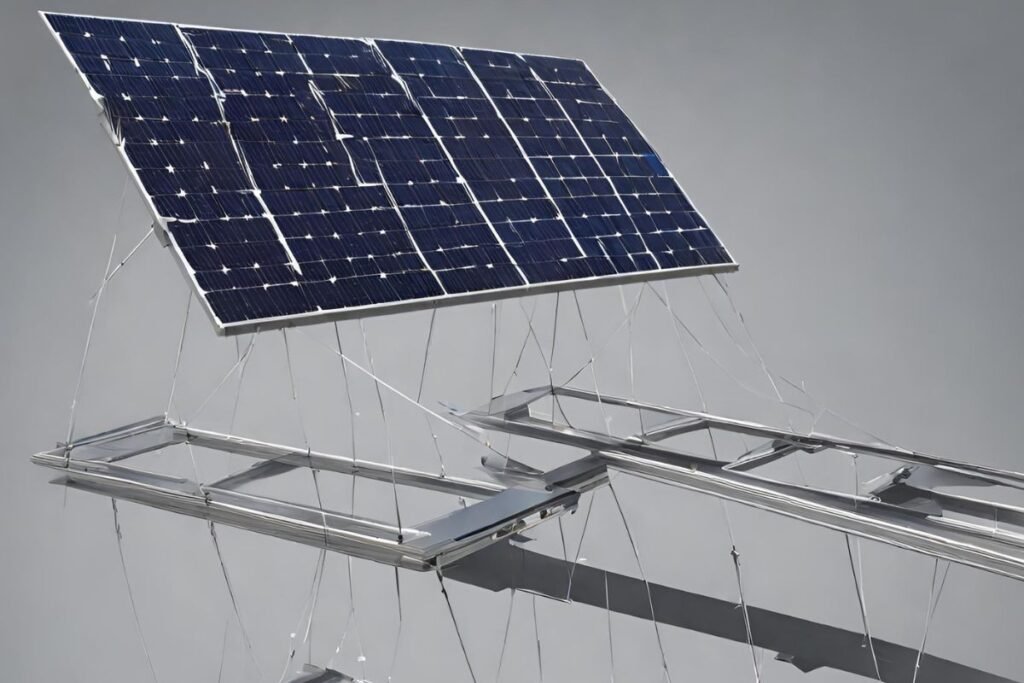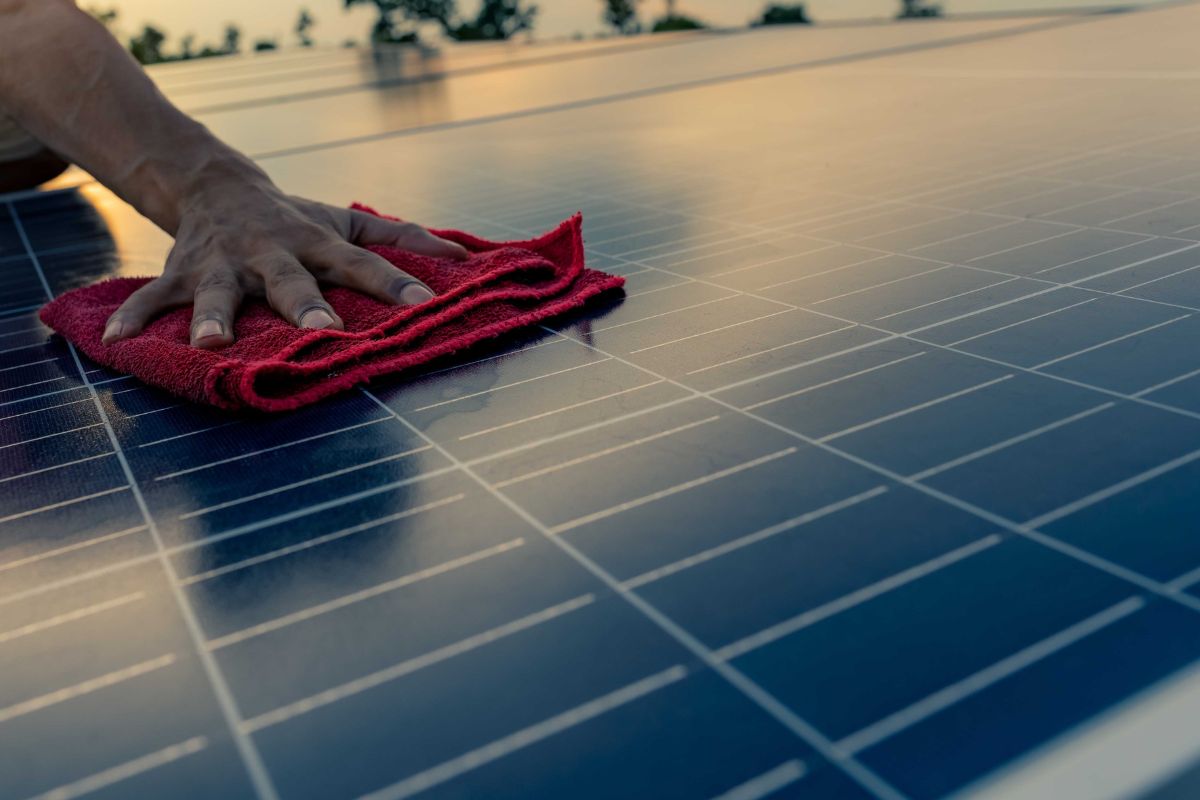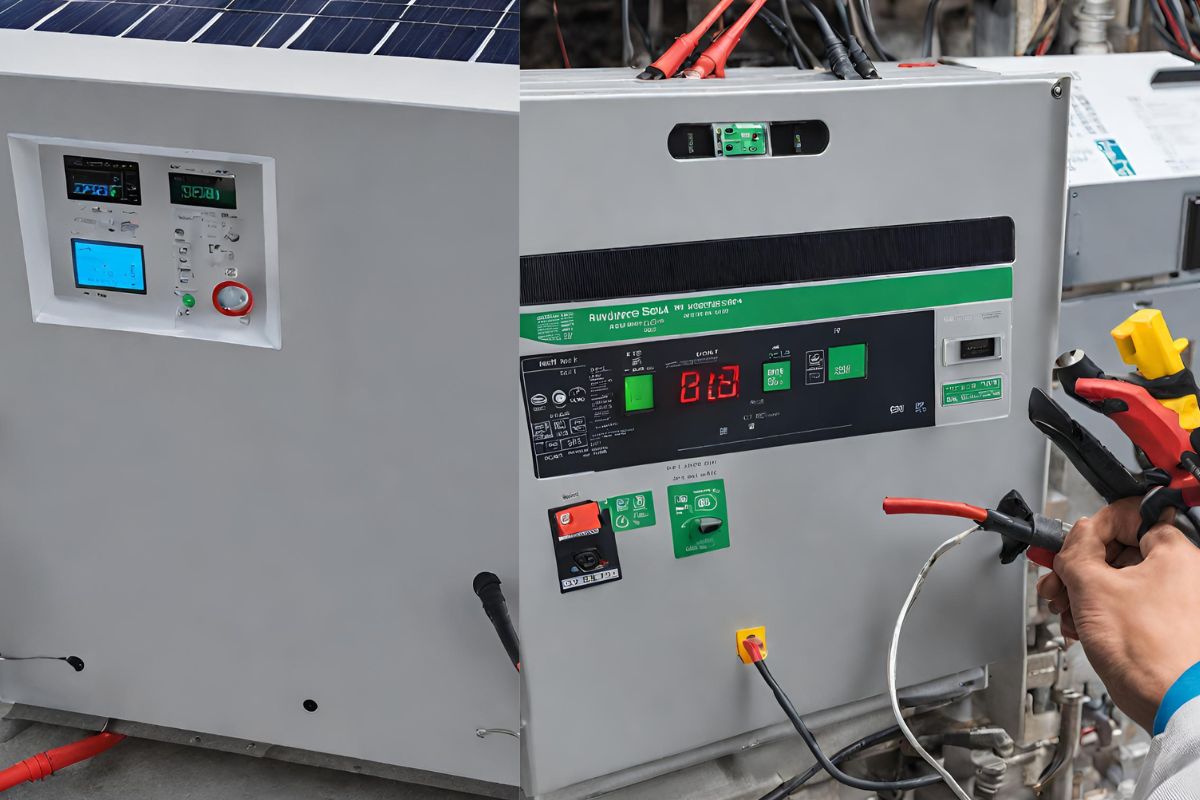The bifacial solar panel’s technology is structured to allow solar panels to generate energy on both their front and back sides.
The bifacial solar panel’s structure is a beautiful design pattern that has drawn my attention over the years.
These structures also serve as a solution for installing bifacial panels on flat surfaces.
To understand the level of irradiation reflected by the solid surface around the bifacial installation, one must consider the albedo, which is the reflection coefficient of the surface.
Let me show you details about the structure of the bifacial panels and how they can be substantial.
See the complete details about Bifacial solar panels here.
What Is A Bifacial Solar Panels Structure
The traditional solar panels have their rear surface made of plastic, which causes the sunlight incident on the back side to go to waste.
Bifacial solar panels have a photovoltaic cell structure with a glass coating on both the front and rear surfaces.
The bifacial solar panels are designed to use the albedo reflected off grass, concrete, or any other surface.
A layer of transparent conductive oxide is also present between the cells in the system.
The front surface of the cell is normally coated with a light-absorbing anti-reflective coating substance. The rear surface is made of a reflective substance such as aluminum.
This lets the panels absorb sunlight from all sides, resulting in greater power output and efficiency.
Furthermore, the silicon utilized in these bifacial solar panels is far higher than those used in monofacial solar panels.
As a result, the photo-generated electric charge flows smoothly from the back surface to the ’emitter’ on the front surface.
The framework is intended to protect the panel from mechanical and environmental harm.
As a result, solar panels sometimes come with a 25 to 30-year warranty, with an annual deterioration rate of under 0.5%.
Bifacial Solar Panels Size
The size of bifacial solar panels differs depending on the manufacturer and the specific model.
However, Bifacial solar panels come in various dimensions and some common sizes.
We have the 60 bifacial cell panels size, which is more commonly used in residential and small commercial installations. They are typically around 65 inches by 39 inches.
And we also have the 72-cell bifacial cell panels, and they are for larger utility-scale installations.
Their measurement is generally about 77 inches by 39 inches.
You must note that these dimensions can be from different manufacturers based on the product lines.
And again, because things are advancing technologically, it may affect their sizes and even their efficiency based on solar panels.
Height Of The Best Bifacial Solar Panel
The height of the bifacial panels significantly impacts the quantity of electricity produced by the solar system, and the relationship may be summarized as follows.
As explained earlier, the more energy generated from the rear of these panels, the higher the panels are above the earth.
This is explained by positing two assumptions about the solar panels’ height.
Assume the panels have a height of 1.5 and a 25-degree slant.
According to the project completed inside the PVsyst program, with a reflection of 0.55 and a system capacity of 20 kW, the output capacity will be 43.4 MWh.
If the panel height is dropped to 0.3 above ground with the same remaining parameters, the output capacity is reduced to 40.8 MWh.
We notice that when the solar panels’ height dropped to 0.3 meters rather than 1.5 meters, the production rate declined.
How Efficient Are Bifacial Solar Panels
The bifacial solar panels were produced to use most of the solar radiation falling on the front and back sides of the panels.
According to my research, bifacial panels have a higher ability to generate electricity than traditional panels by up to 26%.
Due to the ability of the back face to generate electricity, even if it is far from sunlight
Bifacial solar panels are specially designed to increase productivity through both sides, as they generate electrical energy from the front and back sides.
How it works is that the front side benefits from direct sunlight, and the back side from light reflected from the surface of the Earth.
Therefore, the energy generated from the bifacial solar panel is equal to the energy generated from the front side + the energy generated from the backside.
The energy production from the back side depends on the soil quality that will reflect sunlight.
In addition, installing the panels is related to several factors, such as the distance between the rows and the height of the panels above the ground, and I have discussed this previously.
Increasing the distance between the rows of bifacial panels, let’s say by 2m, will increase the amount of light reflected on the back side, and you will experience increasing production capacity.
You can see that the height of the panels has a significant role in increasing the power produced by the back side of each double-sided solar panel.
What Is The Best Surface For Bifacial Solar Panels?
Bifacial solar panels absorb more sunlight by utilizing both sides, resulting in increased electric generation.
The surface on which these panels will be mounted can significantly affect their efficiency.
When deciding on the optimal surface for bifacial solar panels, consider the following factors:
1. A smooth and clean surfaces are dreaded
Bifacial solar panels operate best when mounted on clean, flat surfaces with little shade and light impediments.
Regular surface care, such as cleaning to remove dust, grime, and debris, is critical for increasing the effectiveness of the panels.
2. highly reflective Surfaces
It is advantageous to put bifacial solar panels on surfaces that reflect light effectively to improve their effectiveness.
White gravel, concrete, or light-colored rooftops, for example, can improve the light that reaches the underside of the panels.
3. Tilt factor and Orientation
Surface tilt and orientation can considerably influence the performance of bifacial solar panels.
With proper tilting and orientation, both the front and back sides of the panels receive enough sunlight throughout the day, resulting in improved energy output.
Once again, Surfaces with greater albedo values reflect more light, which can help bifacial solar panels perform better altogether.
As a result, surfaces with a greater albedo, such as snow, white sand, or certain roofing materials, can help bifacial solar panels produce more energy.
When finding the right surface for bifacial solar panels, it is important to undertake a site-specific study and evaluate things like the weather in the area, geographical location, and accessible mounting alternatives.
How Durable Is a Bifacial Solar Panel?
One other part of the bifacial solar panels in terms of their durability is that they are built with high-quality material that can withstand any conditions.
You should also be aware to take note of the product manufacturer because this can also be an issue that may affect their life span.
To help with that, let us look into some general areas about the durability of the bifacial solar panels.
Bifacial solar panels’ mechanical load capacity
Bifacial solar panels are designed to withstand mechanical stresses like wind and snow.
Solar panels are typically constructed of silicon or similar semiconductor material and then mounted in a metal panel frame with a glass enclosure.
When exposed to photons of sunlight (extremely tiny packets of energy), this substance releases electrons and generates an electric charge.
The mechanic component ensures the solar panels undergo rigorous testing to assess their mechanical load capability.
Guaranteeing they can endure severe winds and significant snow loads without incurring damage.
Weather Resistance
As previously stated, bifacial solar panels are built to resist various weather conditions, including sunshine, rain, snow, and hail exposure.
This was made possible by the materials used in their creation. They were picked explicitly for their resilience to UV rays, moisture, and temperature fluctuations.
It is also why solar panels can work effectively and consistently throughout time.
Frame and Encapsulation
Bifacial solar panels are made using sturdy frames and long-lasting encapsulation materials.
These are high-quality materials, such as tempered glass and robust metal frames.
This is to help protect the solar cells from mechanical stress and environmental conditions. It also ensures structural support and protects cells from physical harm.
To improve bifacial panel performance during their lifetime. During the manufacturing process, bifacial solar panels are subjected to stringent quality control procedures.
We’ve seen some points at which bifacial solar panels are tested for durability. Furthermore, we have shown that bifacial solar panels are often long-lasting.
However, Their lifetime and efficacy depend on the correct installation and a regular maintenance program.
Constant inspections, cleaning, and monitoring can assist in discovering any faults that may be affecting the functioning of the panels.
The best thing to do in such a situation is to act quickly, extending their longevity and increasing their energy production over time.
The Significance And Aspects That Influence The Bifacial Rear-End Power.
One of the primary benefits of bifacial solar panels is that they are designed to provide optimal efficiency even with the most recent photovoltaic technology.
Even while guaranteeing maximum wind and snow load resistance, the contact surface between the panel and the concrete support.
It is significantly decreased, the distance between the rows is readily modulated, and the rear side of the panel is free of impediments.
The lack of shaded regions caused by support structures is, in fact, a basic criterion for bifacial module-specific support systems:
One of the benefits of bifacial solar panel structures is the large variety of heights and inclinations possible – up to 30°.
It is critical to determine the optimal option to ensure maximum module performance.
However, several elements continue to impact its performance. The light reflected from the module’s rear acts differently than the light reaching the front.
Bifacial modules must be defined as the “bifacial ratio,” or the connection between back and front irradiation.
The amount of sunlight reflected by the ground and dispersed by the atmosphere also affects rear irradiation.
Other aspects to consider are shadows, module height, and the pitch gap between module rows.
The afflicted portion might have a considerable impact on the ultimate performance of the solar panel. Thus, it is critical to assess all of the parameters thoroughly.
Final Thought
We have seen how crucial bifacial solar panel construction is. Furthermore, we have found that bifacial solar panels may be highly effective when placed higher above the ground.
It vastly improved the operating and efficiency of Bifacial solar panels and paved the way for even more benefits in terms of efficiency.
The most important component influencing energy generation from the backside of the bifacial module is albedo.
Albedo and reflectance are defined differently. Albedo refers to solar radiation reflectance (the entire light spectrum), whereas reflectance solely relates to visible light.
To reap bifacial solar energy benefits, ensure your solar panel system is maintained and checked regularly.
You can also read this: Bifacial solar panels advantages and disadvantages.



